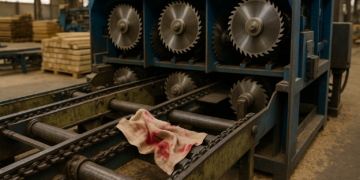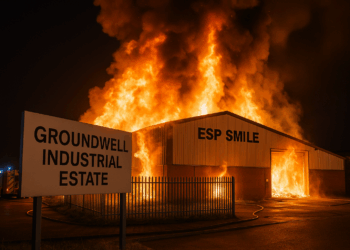Story Highlight
– Matteo Forner, 44, died during end-of-day cleaning.
– Machine unexpectedly activated, trapping his neck.
– Incident occurred while performing routine tasks.
– Victim killed instantly due to machine malfunction.
– Investigation likely following workplace safety protocols.
Full Story
A tragic incident occurred recently involving Matteo Forner, a 44-year-old man who lost his life while performing routine cleaning duties at his workplace. The details surrounding the event highlight the risks associated with certain machinery used in industrial environments.
At the time of the accident, Forner was engaged in end-of-day cleaning activities when a piece of equipment unexpectedly activated. The sudden operation of the machine caused severe injury to Forner, resulting in his neck being trapped, and he was reportedly killed instantly.
Workplace safety officials underscore the importance of stringent protocols when operating heavy machinery, especially during maintenance and cleaning tasks. It raises urgent questions regarding the safeguards in place to prevent such tragic occurrences. Witnesses and colleagues have expressed their disbelief and sorrow over the incident, emphasising the need for robust safety measures to ensure that similar accidents do not occur in the future.
Local health and safety authorities have announced that they will be conducting a thorough investigation into the circumstances surrounding Forner’s death. Their aim is to determine whether all operational guidelines were followed and to identify any potential lapses in safety procedures. This incident has reignited discussions about workplace safety regulations and the necessity for comprehensive training for employees dealing with potentially dangerous equipment.
Experts advocate for regular safety drills and equipment inspections as fundamental practices in industrial sectors. These measures are crucial in cultivating a culture of safety, where employees feel empowered to speak up about unsafe conditions without fear of repercussion.
As the investigation progresses, the community and Forner’s family await answers regarding the tragic incident. Colleagues have been left devastated, remembering him as a dedicated worker who always approached his job with diligence and care. The loss felt by those who knew him reflects the profound impact such incidents have on not just the immediate family but also the wider workplace community.
The importance of mental health support for employees after such traumatic events is also gaining traction. Local authorities are exploring ways to provide counselling services to staff affected by the incident, acknowledging that the ripple effects of workplace tragedies can linger long after the immediate crisis has passed.
As discussions unfold, the overarching goal remains clear: to ensure a safer working environment for all employees. Lessons learned from this investigation will be pivotal in reinforcing existing safety protocols and potentially shaping new regulations that govern machinery operation in various sectors.
This tragic event serves as a stark reminder of the inherent risks associated with industrial work. It is essential for companies to continually evaluate their safety practices and for employees to remain vigilant about the potential dangers they encounter daily.
In light of this incident, calls for enhanced training programmes have intensified. Industry leaders are urged to prioritise safety over productivity, recognising that the protection of employees should always be the foremost concern.
The investigation into Forner’s death will look into the possible causes of the machine’s unexpected activation, including mechanical failures or human error. The results may influence regulatory changes aimed at safeguarding workers in similar environments across the region.
As the community continues to grapple with this loss, it is a poignant moment to reflect on the importance of health and safety in the workplace, and the collective responsibility to foster safer work conditions for everyone. Responses to the incident from various stakeholders will be critical in shaping the future of workplace safety and ensuring that those who dedicate their lives to their jobs can do so without fear of harm.





















This is devastating. My condolences to Matteo Forner’s family and colleagues. An unexpected activation during cleaning points to a failure in isolation procedures and lockout tagout controls or inadequate guarding and safe systems of work. The investigation must establish whether risk assessments were up to date, whether safe working procedures were communicated and enforced, and whether staff received appropriate training and supervision. Employers must ensure machinery cannot be energized during cleaning, that emergency stop functions are effective and accessible, and that competence is verified for anyone working on or near equipment. Regulators should consider immediate action if systemic breaches are found and lessons must be shared across the industry to prevent another family suffering this loss.
This is heartbreaking. My condolences to Matteo’s family and colleagues. Immediate questions must be answered about lockout procedures training and machine guarding. Routine tasks are when people are most at risk so ensure isolation controls are reliable and verified before anyone services or cleans equipment. A prompt independent investigation and review of training records risk assessments and maintenance logs is essential to prevent this happening again.